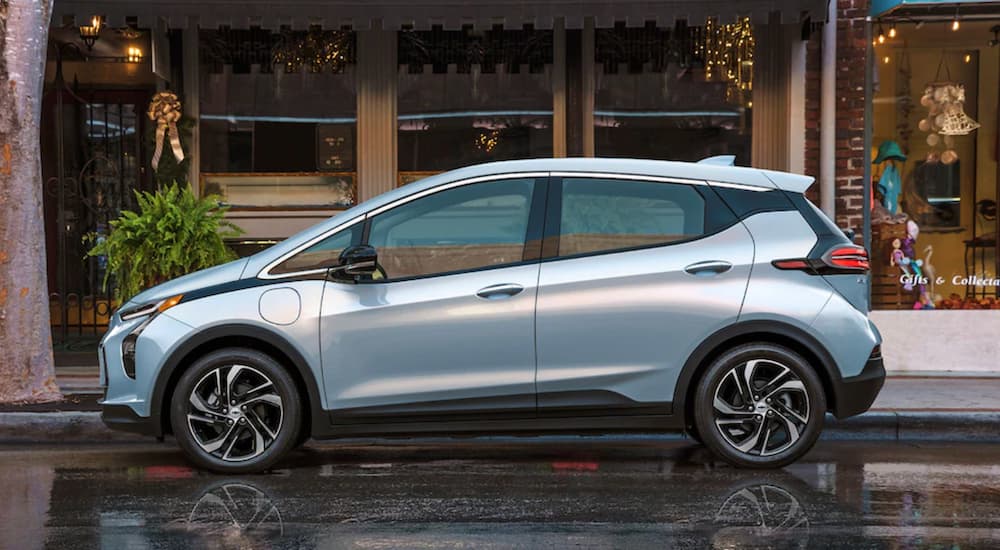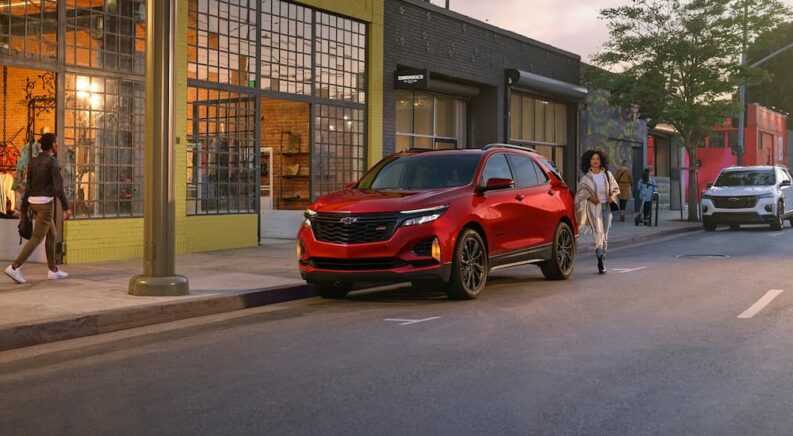Electric vehicles aren’t a modern invention, with the first electric vehicle (EV) developed over a century ago. However, it hasn’t been until recently that electric vehicles have finally proven themselves as a viable alternative to gas-powered cars reliant on internal combustion engines. Today, the burgeoning market has popularized the search for EVs for sale across the country, and beyond. Understandably, more people are enticed by the idea of adopting an all-electric lifestyle and skipping the pump altogether.
While the excitement for EVs is palpable, the vehicles are still shrouded in mystery as people learn more about how they’re made and how they operate. Most of that mystery surrounds EV batteries, from the different types of batteries available to why manufacturers choose certain architectures over others. Fortunately, EV batteries don’t have to remain a mystery as we dive deeper into the different EV battery types, their design characteristics, and their advantages to potential EV owners.
Defining an EV and Why It Matters
Before diving into the basics of EV batteries, it’s critical to know what we mean by an “EV.” We often use the word SUV to describe any vehicle that isn’t a sedan or truck, but there are different types of SUVs, from crossovers to midsize, three-row, and full-size models. The same is true for EVs, which include hybrid electric vehicles (HEVs), plug-in hybrid electric vehicles (PHEVs), battery electric vehicles (BEVs), and fuel cell electric vehicles (FCEVs). So, what’s the difference?
Hybrid electric vehicles and plug-in hybrid vehicles are considered lower-emission, not zero-emission vehicles because they are still reliant on gasoline. While a hybrid incorporates electricity, you still have to fill the tank with gas, and you don’t have to worry about recharging the battery. Alternatively, plug-in hybrid vehicles have larger batteries that must be recharged, but they also run on fuel. These models still produce some emissions, but less than a traditional internal combustion engine vehicle.
Battery electric vehicles are the most common and are commonly called “EVs.” These models are powered solely by electricity via a motor and battery pack that requires recharging using a Level 1, Level 2, or Level 3 charger. Throughout Canada, BEVs typically rely on lithium-based batteries because they’re rechargeable, lightweight, and longer-lasting.
EV Battery Basics: Types and Composition
There are several different types of batteries used in the automotive industry, from lead-acid batteries found in gas-powered cars to nickel-metal hydride and lithium-ion batteries. So, what’s the difference, and why are there so many options? It all comes down to reliability, affordability, and configurability.
Types of Batteries
The lead-acid battery in a gas-powered car is responsible for jumpstarting the engine and the vehicle’s electrical components before the alternator takes over as the primary power supply. While these batteries are reliable, safe, and inexpensive to manufacture and replace, they can’t withstand the high demands of an electric or hybrid electric vehicle. Because of this, most hybrid vehicles rely on nickel-metal hydride batteries, which have longer life cycles but are more expensive.
EV manufacturers typically rely on lithium-ion batteries, the same type of battery found in your smartphone, tablet, and laptop. These batteries have already proven themselves as reliable, efficient, and lightweight. They also discharge at a slower rate and are far more configurable, meaning manufacturers can design the perfect lithium-ion battery setup to answer a broad spectrum of driver needs.
Battery Composition
As you dive deeper into the realm of EVs, you’ll learn more about driving ranges and see firsthand how manufacturers utilize lithium-ion batteries to your advantage. We often see this in the various battery configurations that yield different driving ranges, like a standard-range or long-range battery. But how is this possible?
When you think of an EV battery, it’s easy to envision what you’re already familiar with––the lead-acid battery that sits under the hood of your gas-powered SUV. However, there’s far more to a lithium-ion battery than what meets the eye. Let’s break it down.
Each lithium-ion battery is comprised of a battery cell, which is a unit, pouch, or cylinder. These individual cells are grouped together to form the battery module. Think of the lithium-ion cell as a molecule of helium in a balloon and the battery module as the entire contents of the balloon or the group of cells that work together as a unit to inflate the balloon.
Manufacturers then take the battery modules and wire them together to create a battery pack. These packs are readily configurable, meaning one pack might have three modules while another has over a dozen. This configurability allows manufacturers to design the ideal battery pack relative to the size of the vehicle, performance needs, and the anticipated or expected driving range.

Understanding Battery Architecture
Ongoing industry advancements are responsible for the flourishing EV segment, as automakers find ways to eke more power from EVs, reduce their price tags, and make them more affordable and sustainable to own, operate, and maintain. Battery architecture is among these advancements, with lithium-ion batteries available in various designs that accommodate and appeal to different needs. So, what are these architectures, and what are their advantages?
Pouch Cell Batteries
Pouch cell batteries are gaining momentum in the industry because they’re easy to configure, offer a higher concentration of energy, and readily fit into smaller spaces. Lightweight by design, the pouches are incredibly flexible and can be shaped to fit various spaces. Their moldability is superior and highly favoured because they can be used in different types of vehicles, especially smaller sedans and crossovers. Alternatively, their smaller sizes mean they’re less than ideal for larger vehicles requiring higher output.
Cylindrical Batteries
Most EVs rely on cylindrical lithium-ion batteries because they are the most cost-effective and versatile. This architecture positions two electrodes with lithium-ion electrolytes in a metal container or cylinder. The cells are entirely configurable, meaning manufacturers can design the setup to specific vehicle needs. Moreover, the energy-dense design heightens efficiency and yields a more extended driving range per charge. Alternatively, the nature of the cylindrical design takes up more space and is problem-prone in extreme conditions, performing less effectively in colder temperatures when they aren’t adequately insulated.
Prismatic Batteries
A prismatic architecture can have higher capacity, with the cells aligned in an electrode stack within an aluminum casing. Once the lithium-ion electrolytes fill the stack, it’s folded into the most suitable shape for the EV’s platform. As a result, prismatic batteries are the most customizable, scalable, and energy-dense. However, this also makes them more expensive to manufacture.

Getting the Most From Your EV Battery
Think about where electric vehicles were two decades ago compared to where they are today. EV manufacturers continuously look for ways to progress the segment, most notably with battery design and performance. We want EVs that promise better thrills in the driver’s seat without compromising the driving range. Fortunately, EV batteries are proving their ability to deliver as long as EV owners do their part.
Getting the most from your EV battery starts with understanding its design and how it operates. It also means following the guidelines by not becoming too reliant on Level 3 DC fast charging stations, keeping the battery consistently charged rather than fully depleting it, and recognizing how the temperature outside can impact your driving range and the battery’s performance. While lithium-ion batteries are incredibly versatile and widely praised for their modularity and reliability, enjoying the many benefits of electric power always ends with your awareness and engagement behind the wheel.

